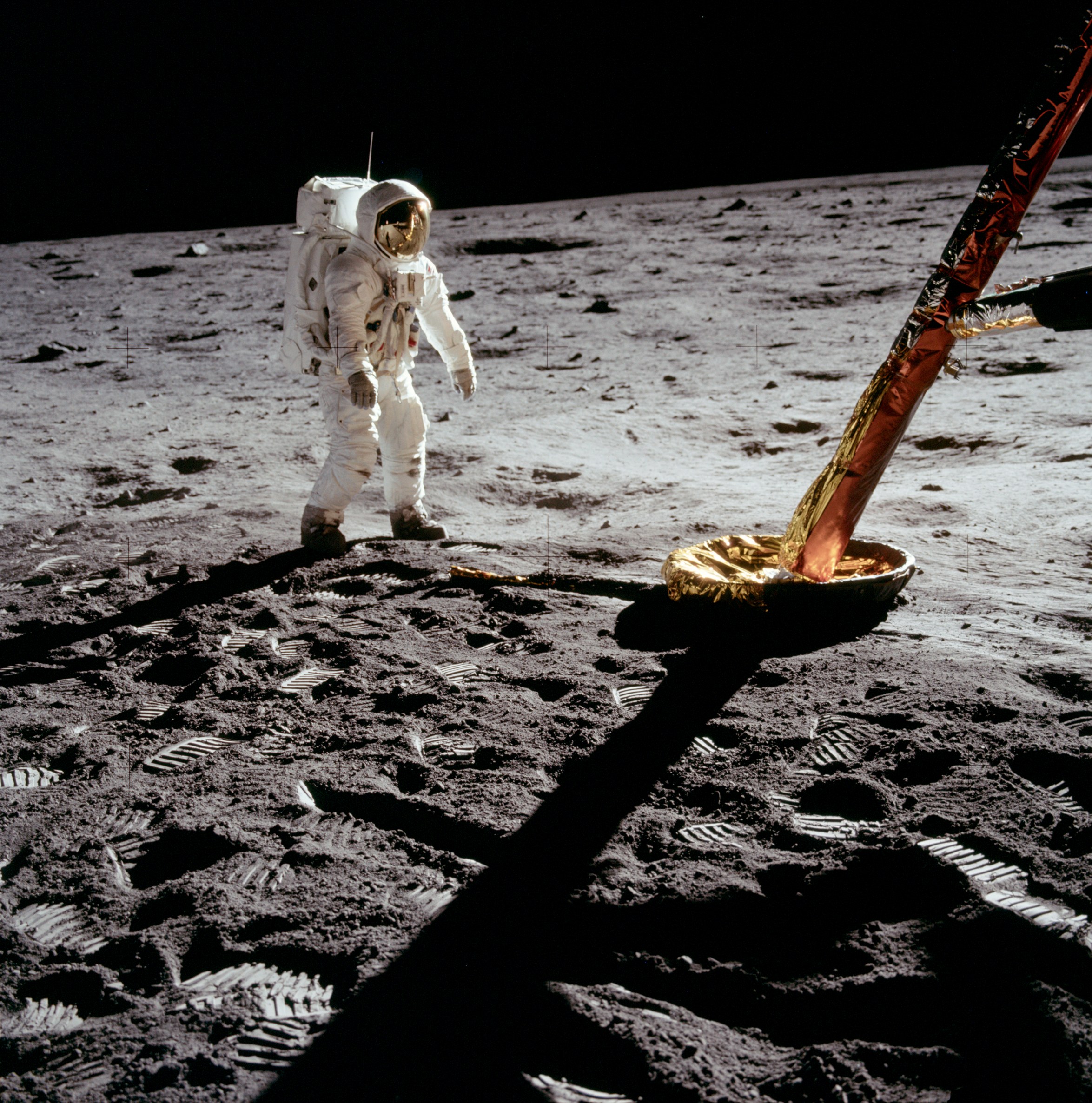This image shows that there is too much dust around the lander for not to form a crater. And then USA can be lucky only once not so many times in all their lunar missions not to have a crater in that fluffy soil.
... You do realise that the middle of the lander is outisde the picture.
Besides is that pure lightinfall or is there something of a street starting yust afther the astronaut going towards the lander. That might be verry tiny dust particles.
Also that astronaut seems to have real dirty boots from the dust but it stops pretty abrupt pretty low the moon dust may be more sticky then believed. Meaning less change on a crater



